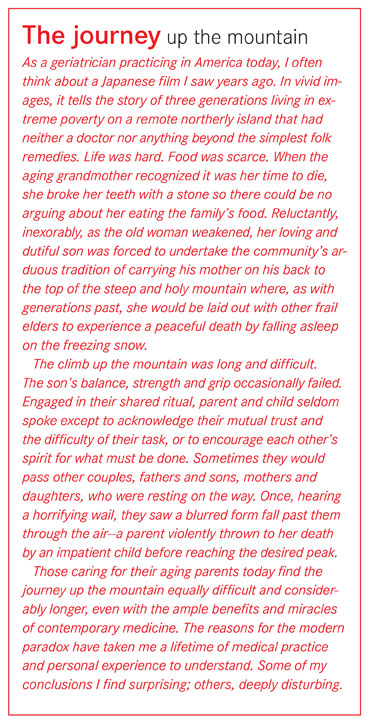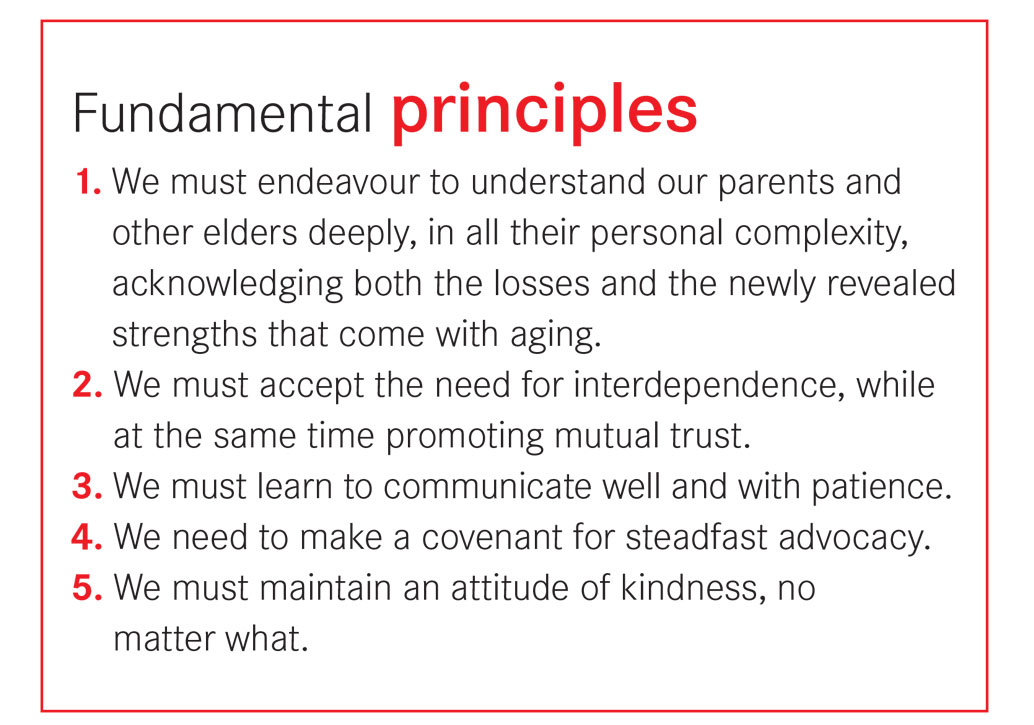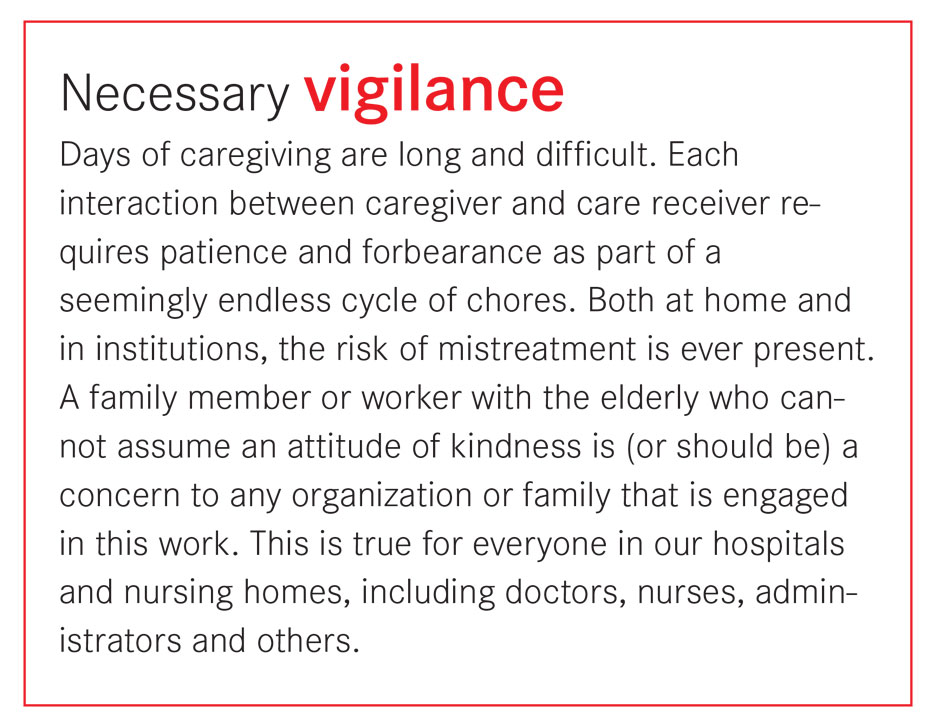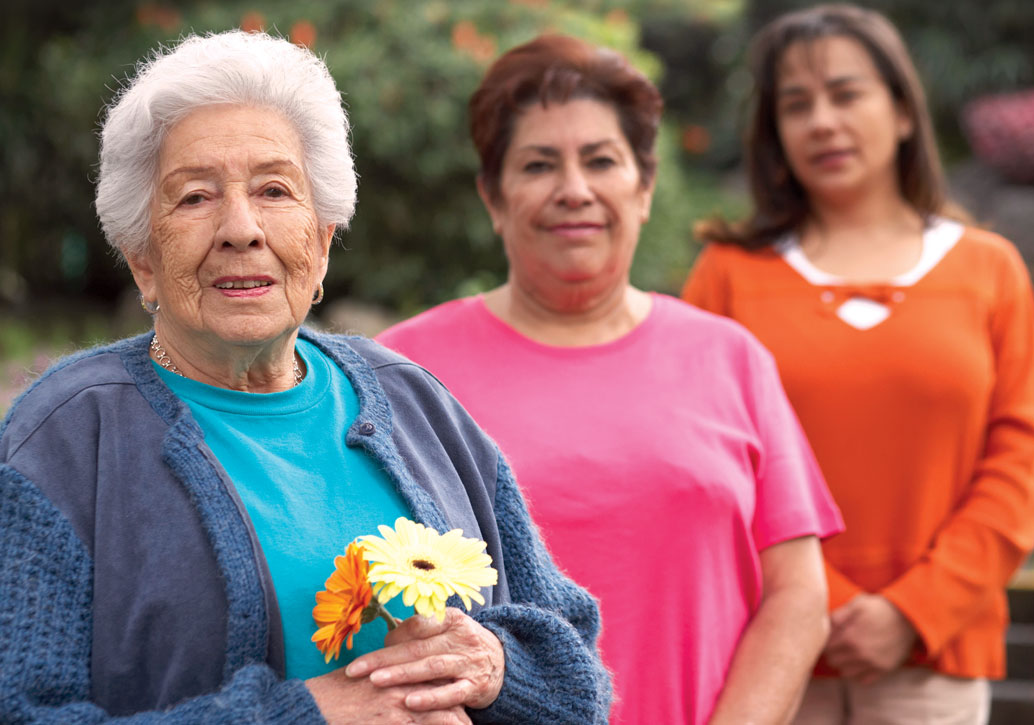Thoughts on the practice of “slow medicine” in elder care
medicine” in elder care
By Dennis McCullough, MD
My vision of better care for elders in late life is not a call for a nostalgic return to some imagined romantic past when the lone family doctor sat by the candlelit bedside tending the ill. It is rather a stern and impassioned call to help families struggling to care for their aging and frail elders to preserve quality of life even in the face of difficult and accumulating diseases.
As Dr. Francis Peabody so wisely said, “The secret of the care of the patient is in caring for the patient.” Commonly in my experience, the accumulating burdens of illness and exhausting medical regimens extract available energies and time from our elders, leaving little for living beyond a “medicalized” life. But, in my way of thinking, there is another way. A family-centred, less expensive way that is shaped by the habits of cooperation, coordination and the conservation of limited resources. This is what I call “slow medicine,” and it can be practiced by you, your family and all those who will attend your patients during their “journey up the mountain” (see sidebar The journey).
Committing to compassion
Slow medicine is a pledge undertaken by families and health professionals working together to achieve the fullest understanding of aging loved ones and their complex, ever-evolving needs. This understanding, in turn, leads to wiser decision-making regarding formal medical interventions. In the practice of slow medicine, there are specific strategies and approaches for making life better for both elders and their families.
Embracing the unsung work of daily attention, slow medicine is a firm foundation for longevity and quality of life at the furthest reaches of age. Excellent chronic care attends to the day-to-day needs and conditions of patients by offering emotional support and social stimulation, supplying better nutrition, easing chronic skin and nail conditions and making sleeping, moving, bathing, dressing and voiding easier. Slow medicine is a careful practice that reliably sustains fragile patterns of well-being. It strengthens, rather than replaces, the selective use of high-tech care.
Late life is a specific and special time of aging. Elders and their families need to engage with this time more fully, consciously, practically and successfully. I have adopted this idea of slowness to benefit the special population of late-life elders who do not move or think as swiftly or see or hear as clearly; whose health problems and solutions are more complex; whose energy stores and resilience are less; and whose recovery takes longer than for people who are younger. This is not a plan for getting ready to die; it is a plan for understanding, caring and living well in the time that is left. Slow medicine’s ultimate goal is a practical and qualitative change in care directed by a more complete respect for and fuller understanding of the particularity of each late-life elder.
 More than science
More than science
This practice calls for using the allotted time health professionals (and families) spend with our aging parents differently and making better, more appropriate decisions more slowly and over an extended period of time. Doing this work well cannot be reduced to knee-jerk routines. It requires thoughtful evaluation and reflection, attentive listening, looking and hands-on participation. It also demands that we ask for medical care that is different from what most elders are presently allowed: it does not embrace the 15-minute office call to renew prescriptions while the doctor peers at a computer screen or taking the answering machine’s advice to go to the emergency room. No sound-bite distillations of information entered into a prefabricated electronic flow sheet can elicit or make sense of the complexities of an elder’s needs, unspoken concerns and nuances of illness.
Focusing on blood pressure control without knowing the patient well or talking for long enough to recognize subtle losses of cognition and strength does not get to the heart of the patient’s (or the family’s) real problems. Knowing the daily burdens, emotional demands and psychological intricacies of your mother’s days in her apartment cannot be undertaken by her doctor alone. Slow medicine requires intimacy and commitment on the part of many others. The best care results when health care professionals, family members and caregivers share information. These conversations allow discoveries and responses to percolate within a clinician’s intuition and subconscious over time, leading to a deeper understanding of an older person’s present situation and their future.
Circle of friends
These balanced, mutually respectful and supportive partnerships between doctors, nurses and other health professionals and elder patients, their families, close friends or neighbours—and anyone else chosen to be part of what I call the “Circle of Concern”—are at the heart of slow medicine. This special group of carefully selected people will naturally connect to a person in trouble and provide steady support and insight. Although at middle age we might engage the help of such a group for a sudden crisis, for failing elders the Circle of Concern gathers for the long run.
This active, extended advocacy partnership can improve our elders’ care by attending to both technical and human needs. It can balance the formal care from professionals and institutions with a particular individual’s physical, emotional and financial capacities, family values and personal philosophical or spiritual outlook. Tailoring such extended and personalized care for a former waitress will be different from tailoring care that might suit a retired college dean—neither is simply “a white-haired old lady.”
Slow medicine is not really new in the annals of medicine, but it needs to be retrieved and given prominence again. Many doctors in the trenches are in mourning for the age-old practice of paying deep attention and truly “attending”—a practice that is being squeezed from our complex, fragmented and technological medical system. Slow medicine for elders in late life enacts the ancient Tibetan wisdom of “making haste slowly.” That is, focusing on the central issues of human caring with patience and a sense of shared humanity, forgiving one another for what cannot be changed, bending flexibly at times of need and holding firmly to shared values and loyalties at other times.
Slow medicine is a commitment to understand, support, heal and care for the weakest among us in a way we would want to be cared for ourselves.
Dennis McCullough, MD, has been a family physician and geriatrician for 30 years. He is the co-author of The Little Black Book of Geriatrics. He lives with his wife, poet Pamela Harrison, in Norwich, Vermont.














